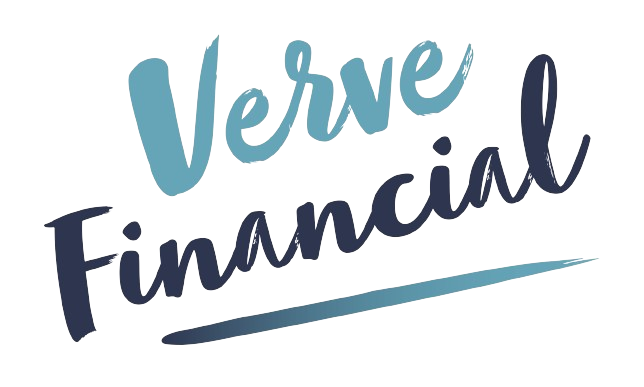Joint Borrower Sole Proprietor Mortgage
- We are a fee free mortgage brokerage. We do not charge our customers for any advice we are purely paid by the lender on completion.
- We work with dozens of lenders including the high street banks and can compare their deals for you, always with your best interest at heart.
- We take away the stress and uncertainty of applying directly with a lender who may not have the most suitable deal for you.
Home / Mortgages / First Time Buyers / Joint Borrower Sole...
Speak to an expert
Gary has been providing advice to clients on their mortgage needs for over 10 years. He has extensive experience in providing advice and recommendation on all types of mortgage including high net worth purchases, new build purchases, self-employed, contractor and adverse credit. Clients working with Gary can expect a straight-forward honest and highly personalised service.
Gary Boakes
Director and Mortgage advisor

Body
What is a Joint Borrower Sole Proprietor mortgage and how do they work?
A Joint Borrower Sole Proprietor or JBSP mortgage allows two or more people to buy a property together, with just one person taking ownership of that property.
These mortgages can be really useful for parents or family members who want to help someone buy a home, but without owning that property. They are a new alternative to a guarantor mortgage.
What criteria do you need to meet for a JBSP mortgage? Who is eligible for one?
To a certain degree, anyone is eligible for them. A lot of the Joint Borrower Sole Proprietor mortgages we’ve done in the past have been for First Time Buyers looking to buy their first property. Usually there is an affordability gap between the type of property that they can afford on their incomes and the property they want to buy. That’s where your family member or friend can help you out.
Lenders will look at your income and expenditure for both parties – the buyer and the helper – and basically determine what they’re willing to offer you based on those circumstances.
There’s more to take into account, because the likelihood is that the parent, family member or friend owns a home and has a mortgage. They will have their own expenditure, and that will be taken into account for that person.
We offer fee free mortgage advice.
We do not charge our customers for any mortgage advice we are purely paid by the lender on completion.

Do you pay stamp duty on a JBSP mortgage?
Yes, normal stamp duty rules apply. The buyer will pay the standard stamp duty as a first time buyer or a home mover.
But the reason why a Joint Borrower Sole Proprietor mortgage is popular is that there is a second property stamp duty tax. These mortgages are a way around the additional 3% charge on a second property.
If your parent already owns a property, because they’re not going onto the mortgage deeds, you won’t have to pay the additional stamp duty tax.
Can you have a sole mortgage on a joint property?
Yes, you can. It’s where the person buying the property with you is legally named on the property but not on the mortgage paperwork. They have no legal responsibility to pay the mortgage but the home is still at risk if you are unable to make your payments.
What’s the difference between a joint mortgage and a JBSP mortgage?
With a joint mortgage you legally own the property together. You can choose how you own that property but there will be a percentage that you own.
My wife and I have a joint mortgage together and we own the property 50-50. We have joint responsibility for that mortgage. With a Joint Borrower Sole Proprietor mortgage, that isn’t the case.
Potentially, if I used that mortgage myself and my wife was helping with the affordability on it, I would have legal responsibility for that property. She wouldn’t. That’s the difference – the legal ownership of the property.
What’s the difference between a guarantor mortgage and a Joint Borrower Sole Proprietor mortgage?
We have recorded a separate podcast on guarantor mortgages, so have a listen to that.
There’s not much difference between the two. In the past, guarantor mortgages used some security in the background to help, such as the guarantor’s property or savings.
With Joint Borrower Sole Proprietor the affordability is looked at for both people – your expenditure and income. There’s not a massive difference between the two types. Generally guarantors aren’t on the mortgage deeds anyway – and that’s the big thing about the Joint Borrower Sole Proprietor mortgage.
Can I get a Joint Borrower Sole Proprietor mortgage with bad credit?
As with any mortgage, every lender will have their own way of looking at bad credit and what they will accept. Some will accept a certain element of bad credit, while others won’t.
It does become a little bit more restrictive if you have got bad credit. We would always recommend speaking to a broker, because we’ll know which lenders to approach and what they can do for you.
As long as there is a lender that will accept your bad credit and has the product available, we should be able to get you a Joint Borrower Sole Proprietor deal.
We work with dozens of lenders including the high street banks and can compare their deals for you, always with your best interest at heart.

How does remortgaging a JBSP mortgage work?
If you are remortgaging and keeping everything the same, you can only go out to remortgage with lenders that have the same capability.
You will probably find that you end up doing a product transfer – which means staying with your current lender and taking a new product. We’d have to look at the circumstances at the time.
You might also remortgage to take off the partner. Perhaps your financial commitments have got to a point that you can now afford that mortgage all on your own. In that case we can look at any lender, as we would normally.
What are the pros and cons of a Joint Borrower Sole Proprietor mortgage?
The advantage is that you can get a mortgage at a little bit more than you can currently afford. That can get you on the property ladder sooner. There’s also no stamp duty liability for the additional borrower.
It’s not just for parents – brothers, sisters, even friends can help you with these types of mortgage, so it broadens out what you can do.
With the cons, it comes down to ownership – all borrowers have the joint responsibility for repayments. So you have the responsibility to pay that mortgage, but you don’t own the property.
Also, these mortgages are generally based on the ages of both people. If the parent is older it will limit your mortgage terms. If your parent is 50, the likelihood is you can get a 25 year term. But if your parent is 60, you may only get 15 or 20 years, which will increase your mortgage payments. That’s probably one of the biggest downsides.
These are really good mortgages, but if your mortgage capability is only £150,000 with a standard mortgage, but with Joint Borrower Sole Proprietor you’re able to get £250,000, that’s an extra £100,000 mortgage. But it could potentially be on a shorter term because it’ll be based on the older borrower.
You’ve really got a look at the circumstances – are you really having to manage that mortgage on your own? Is that feasible? Or are your parents or family members going to be helping you with those payments? That’s why we always recommend you speak to a broker for these types of mortgages.
Get in touch
We take away the stress and uncertainty of applying directly with a lender who may not have the most suitable deal for you.
How can a mortgage broker help if somebody is looking at Joint Borrower Sole Proprietor mortgages?
These are really technical, specific mortgages. Not every lender does them. You’re not able to walk into a bank and ask for one. You need to speak to a broker that knows what they’re doing and where to go.
We can also explain the risk factors and help you make a plan going forwards. That is also something to bear in mind – what is the long-term plan and how feasible is it?
We can have those honest conversations with you on how it might work for you, your family or friend. That’s how we can help – not just doing the mortgage, but having that general conversation.
Warning Text

YOUR HOME MAY BE REPOSSESSED IF YOU DO NOT KEEP UP WITH YOUR MORTGAGE REPAYMENTS.
Every episode is a gateway to new knowledge and endless inspiration!
Related podcasts
-


-


Fixed-term employment contract part 2
All about fixed-term employment contract mortgages part 2
LISTEN NOW -


-


Unlock the answers you seek- the best solutions often start with the right questions!
FAQs
-
What do I need to bring to an initial meeting?
Three months’ payslips, three months’ bank statements, proof of ID and address, proof of deposit.
-
Do you get commission?
For mortgage and protection products only.
-
Is life insurance necessary when taking out a mortgage?
While life insurance isn’t mandatory when securing a mortgage, it’s highly recommended. It offers peace of mind, ensuring your loved ones would be financially protected if something were to happen to you. Many clients find that life insurance provides a valuable safety net, especially when taking on a long-term financial commitment like a mortgage.
At Verve Financial Limited, we can help you explore life insurance options and find the right plan that aligns with your family’s needs and lifestyle. Protecting your future has never been easier.



